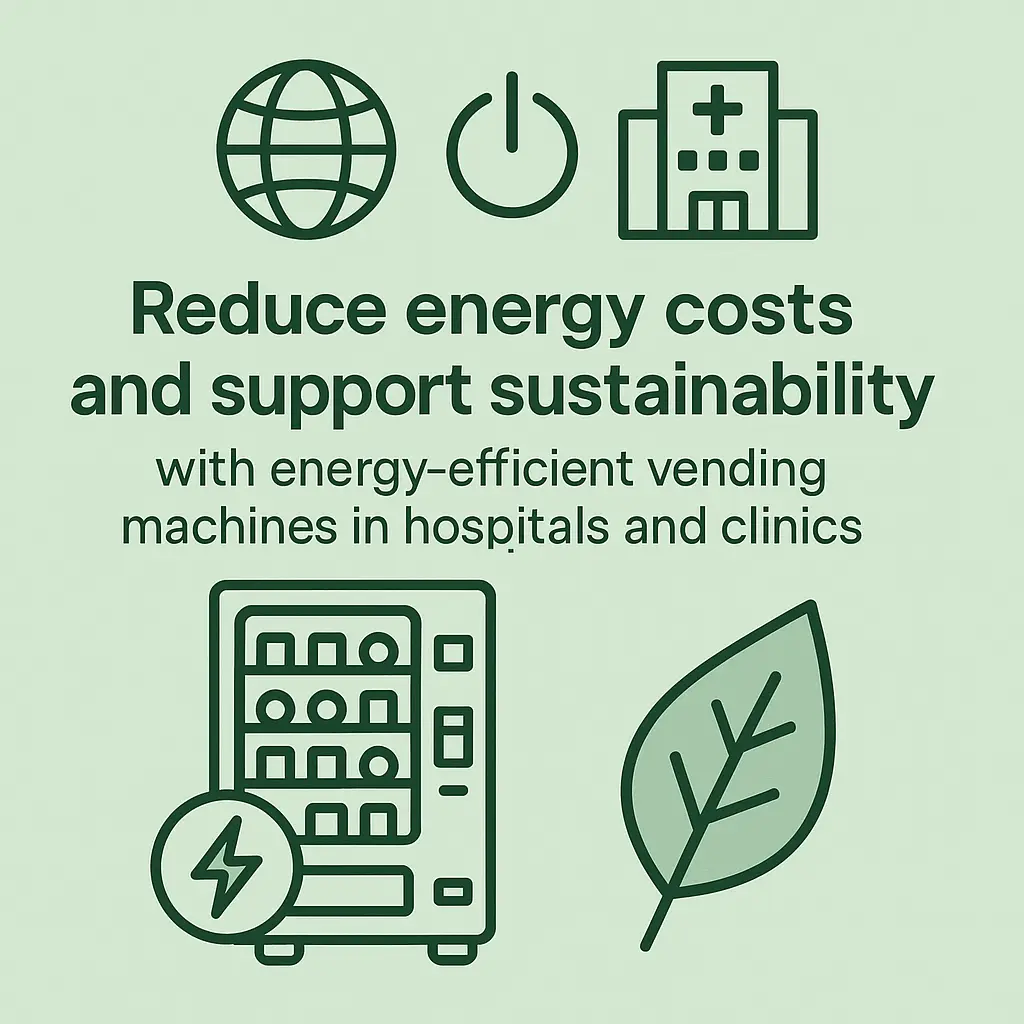Energy-Efficient Vending Machines for Healthcare Facilities
Reduce energy costs and support sustainability with energy-efficient vending machines in hospitals and clinics.
Back to Vending for Healthcare ResourcesReduce energy costs and support sustainability with energy-efficient vending machines in hospitals and clinics.
Back to Vending for Healthcare ResourcesThey use advanced cooling, LED lighting, and power management systems that cut utility costs significantly while maintaining convenience and reliability.
![]() Modern machines use 40% less energy than traditional models
Modern machines use 40% less energy than traditional models
![]() Energy savings align with hospital sustainability initiatives
Energy savings align with hospital sustainability initiatives
![]() Lower utility costs free resources for patient-focused programs
Lower utility costs free resources for patient-focused programs

Healthcare facilities operate around the clock, which means that energy consumption is a constant concern. From lighting to medical equipment, electricity bills quickly add up. Traditional vending machines only increase this burden, using outdated refrigeration and inefficient lighting that can quietly inflate utility costs. That is why more hospitals and clinics are turning toward energy-efficient vending options as part of their cost-control and sustainability strategies.
Hospitals and clinics must strike a balance between patient care, staff needs, and operational expenses. Energy-efficient vending machines directly support this balance by lowering electricity usage. Newer designs incorporate LED lighting, improved insulation, and smart compressors that adapt to demand, ensuring the machines run only when needed without compromising product freshness or reliability.
For administrators, the appeal goes beyond reducing monthly bills. Many healthcare systems set annual sustainability targets. Energy-efficient vending solutions align with these goals by reducing carbon footprints. Over time, even modest savings add up, freeing resources that can be redirected toward staffing, technology, or patient services. To further understand how facilities balance amenities with finances, review this guide on hospital revenue programs.
Modern vending technology integrates advanced cooling units, low-power sleep modes, and adaptive energy management systems. These upgrades significantly outperform older models that ran continuously. Some options even integrate monitoring tools to track consumption. For hospitals where every expense is scrutinized, these smart features provide transparency and measurable impact. For a comparison of different machine types, visit this resource on machine options for healthcare environments.
Beyond cost and energy savings, efficient vending machines still deliver the same convenient access to food and beverages. Patients, visitors, and staff can rely on them day or night without guilt about wasteful energy use. This creates a better perception of hospital operations while reinforcing commitment to sustainability.
If you're exploring vending options for your business, Vending Exchange can help simplify the process. Delivery, Installation and Equipment is provided at no cost to you - vendors provide the machines, keep them stocked, and handle all servicing. Whether you need a provider or full-service management, just fill out the form on this page to get started.
They reduce electricity costs, support sustainability goals, and improve overall efficiency in healthcare settings.
Newer machines often use up to 40% less energy compared to older models.
Yes, advanced cooling systems ensure products remain fresh while using less power.
Absolutely, energy savings accumulate month after month, reducing overall utility bills.
Yes, they align with green building standards and help facilities meet environmental targets.
Yes, most models use LED lighting, which is brighter, cooler, and consumes less power.
Yes, they are designed for continuous use with built-in power management systems.
Installation is typically provided at no cost, making the switch easy for facilities.
Yes, they integrate modern payment systems while maintaining energy savings features.
Many models include monitoring tools that track energy consumption and cost savings over time.